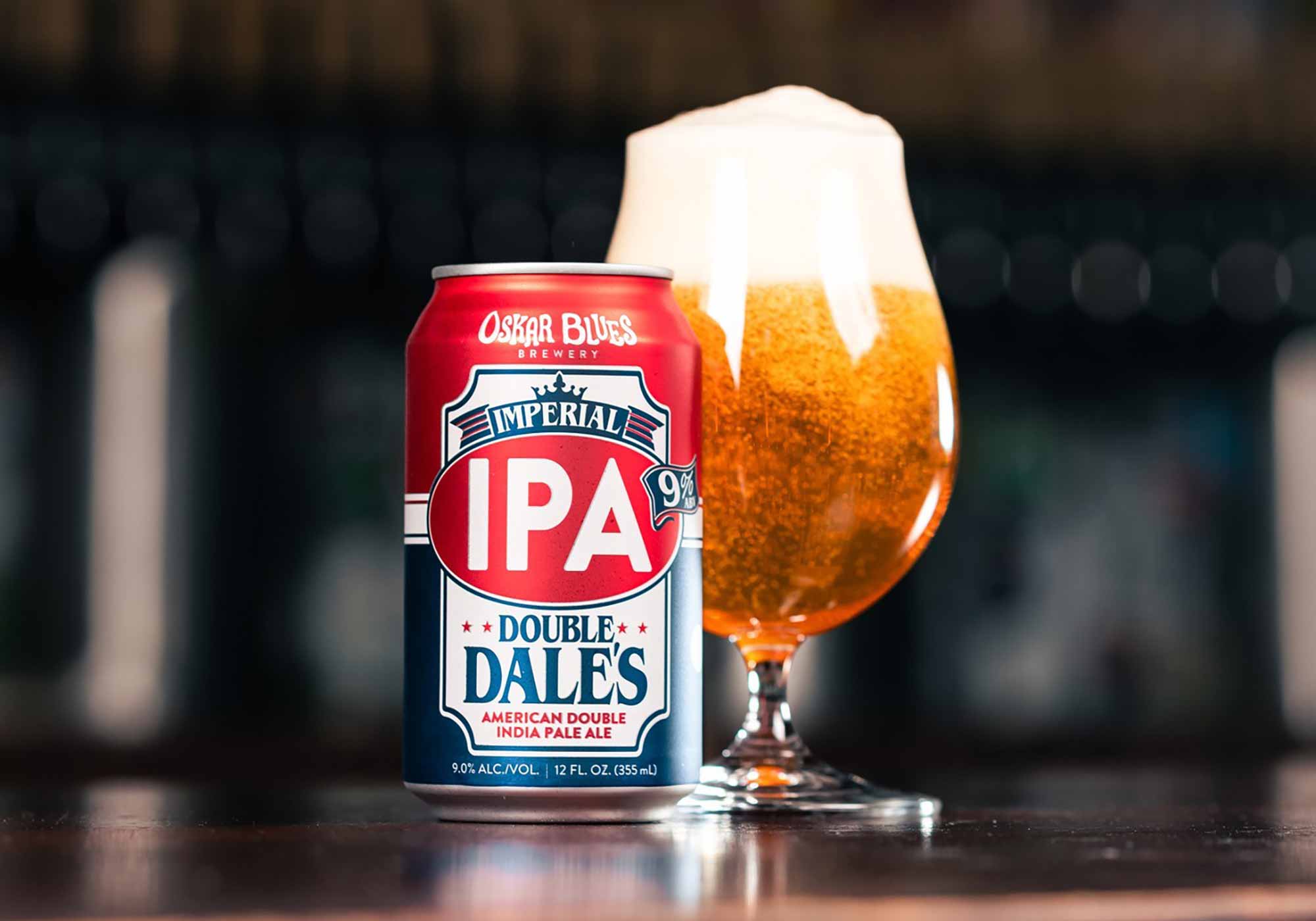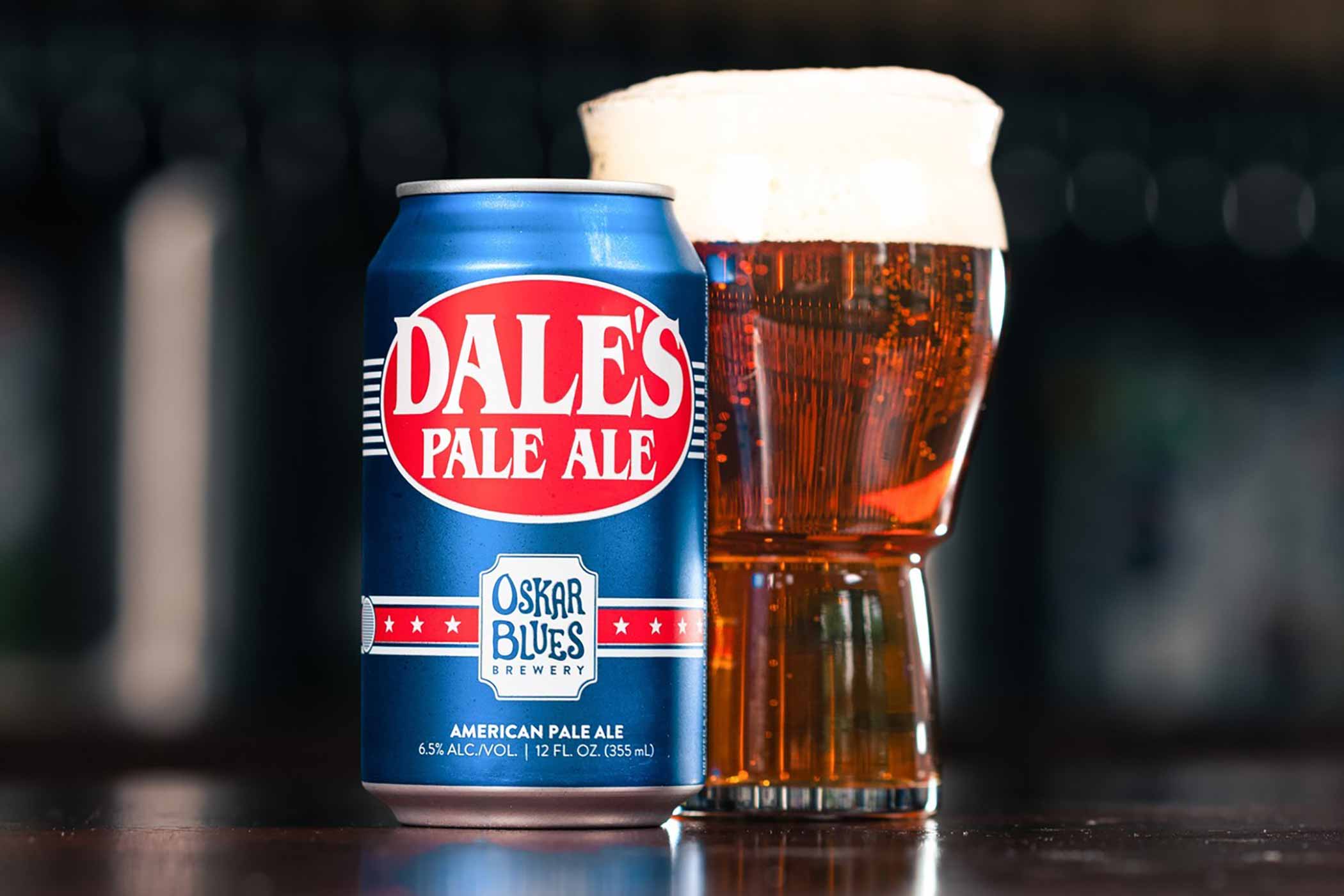Shop
Oskar Blues Double Dale’s: A Nod to the Classic, a Finger to the World
Big, bold, badass.
This is a paid, sponsored post presented by our friends at the Oskar Blues Brewery.
Here’s a zinger for you: How can you possibly brew a beer that respects one of the most influential American craft beers of all time yet stands out on its own? That’s the challenge Oskar Blues faced this year when Dale’s Pale Ale celebrated its twentieth anniversary. In 2002, Oskar Blues Brewery Founder Dale Katechis stuck up a middle finger to the industry when he put Dale’s Pale Ale in a can. Taboo at the time, cans are now ubiquitous thanks to Katechis’ rebellious decision. To commemorate the legendary beer, Oskar Blues had to find a way to once again flip the bird, if you will. Released earlier this year, Double Dale’s Imperial IPA gives a nod to the original Dale’s and then does a double take.
Double Dale’s doesn’t seek to be better, but rather to be different.
“It’s impossible to improve upon such a classic recipe, so we went in a slightly different direction with Double Dale’s,” says Oskar Blues Head Brewer Juice Drapeau, who helped develop the recipe for Double Dale’s. “Double Dale’s captures some of the citrus and caramel character of Dale’s, while achieving its own unique flavor profile and identity. We wanted to create something new and fresh that would live up to the legacy Dale’s Pale Ale created—most importantly being a boundary-stomping, hopped-up beer.”
No easy task.
But then again, Oskar Blues has never taken the path well traveled. This bold, badass brewery has always bucked convention. Whether by putting Dale’s Pale Ale in a can. Or crafting its own Scotch ale, Old Chub. Or brewing the boundary-breaking Ten FIDY imperial stout (FIDY stands for “Fuck the Industry, Do it Yourself.”)
Now, Double Dale’s will stand tall on the shelf (literally—it’s available in single-serve 19.2oz along with 12oz cans) next to Oskar Blues’ other revolutionary beers.
How Do You Brew a Beer That Does a Double Take on a Classic?
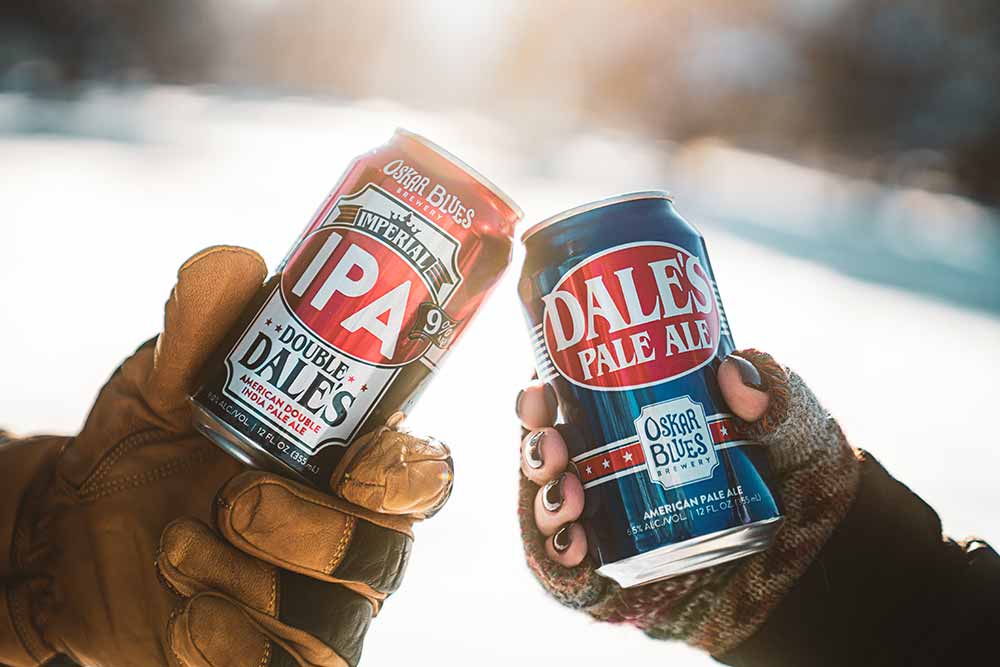
Photography courtesy of Oskar Blues Brewery
Call this a dare (or a double dog dare) Oskar Blues plunged into head first.
“We wanted to branch off the success of Dale’s Pale Ale but offer something different,” says Drapeau.
So the brewing team, led by Drapeau, created a whole new recipe with influences from the original Dale’s.
Keying in on some of those citrus, berry, fruity notes iconic to Dale’s, Drapeau says they took things one step further, choosing a dry hop that accentuated those drinkable characteristics of Dale’s Pale Ale to the nth degree.
Featuring a dry hop of El Dorado, Talus, and Nelson, Double Dale’s hits “a bit more tropical, citrus forward but on the back end has pineyness that people relate to traditional Dale’s Pale Ale without being so resinous,” says Sara Laurienti, Director of Brewery Operations for Oskar Blues,
But both Drapeau and Laurienti made this very clear: Double Dale’s isn’t just a scaled, amped-up version of Dale’s.
Rather, the beer is its own bold beast. A culmination of everything Oskar Blues has learned about brewing a successful IPA wrapped up inside a can. Pretty, fitting we’d say.
So if imitation is the sincerest form of flattery, Double Dale’s isn’t buying it. Because make no mistake, Double Dale’s stands on its own as a, wait for it…drinkable 9% ABV beer.
Double Dale’s: Achieving the Smoothest 9% ABV Imperial IPA
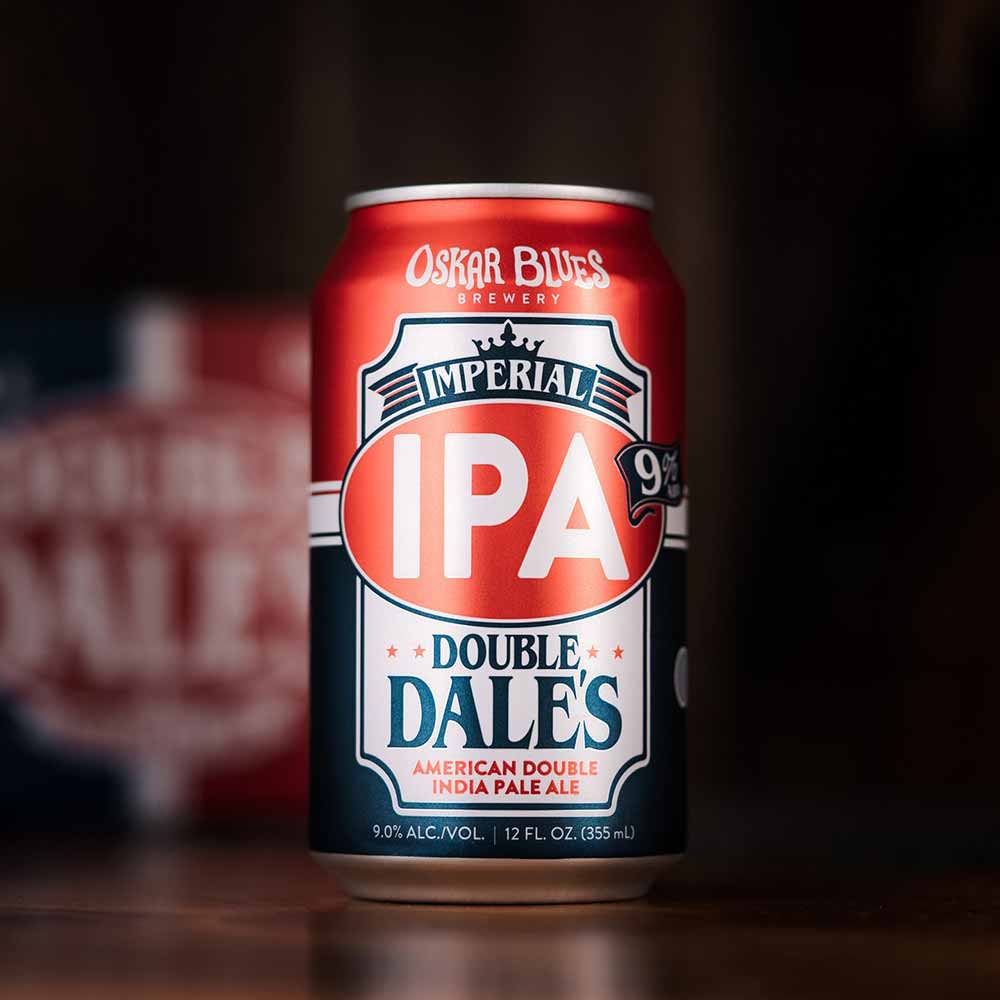
Photography courtesy of Oskar Blues Brewery
To truly set Double Dale’s apart, Drapeau says Oskar Blues focused on making this imperial IPA incredibly drinkable.
“I’ve spent so much time working on what is the new hazy…that it was great to just make a really focused beer,” says Drapeau.
Consider this a nonconformist move Oskar Blues has perfected—taking the conventional and striking a discordant chord that still sounds harmonious.
“Even though with this beer you have to watch out for the ABV, it doesn’t fill you up quite as much as a double, imperial, or even occasionally Dale’s Pale Ale does,” says Laurienti with a sly smile. “It’s a double and higher ABV, but it is perceived sometimes as more drinkable than Dale’s.”
Very tricky, Oskar Blues, very tricky!
And this beer did prove pretty tricky to brew.
“Building a dry, crisp 9% imperial IPA is not the easiest thing,” says Drapeau. In order to achieve the drinkability, Drapeau had to get creative with the malt bill.
A combination of steamed crystal, Crystal 10, and Special B all work in tandem to impart a “nice, gorgeous orange reddish hue in the beer without overloading it with those medium Crystal malts that leave residual sweetness in beers,” says Drapeua. The light malts give Double Dale’s its unique hue without imparting a ton of unfermentable sugars.
The result?
A beer that’s a smooth operator with a sneaky high ABV.
It’s just one of the many careful considerations Drapeau and Laurienti had to make when developing this recipe.
Even the Water in Double Dale’s Gets a Double Dose
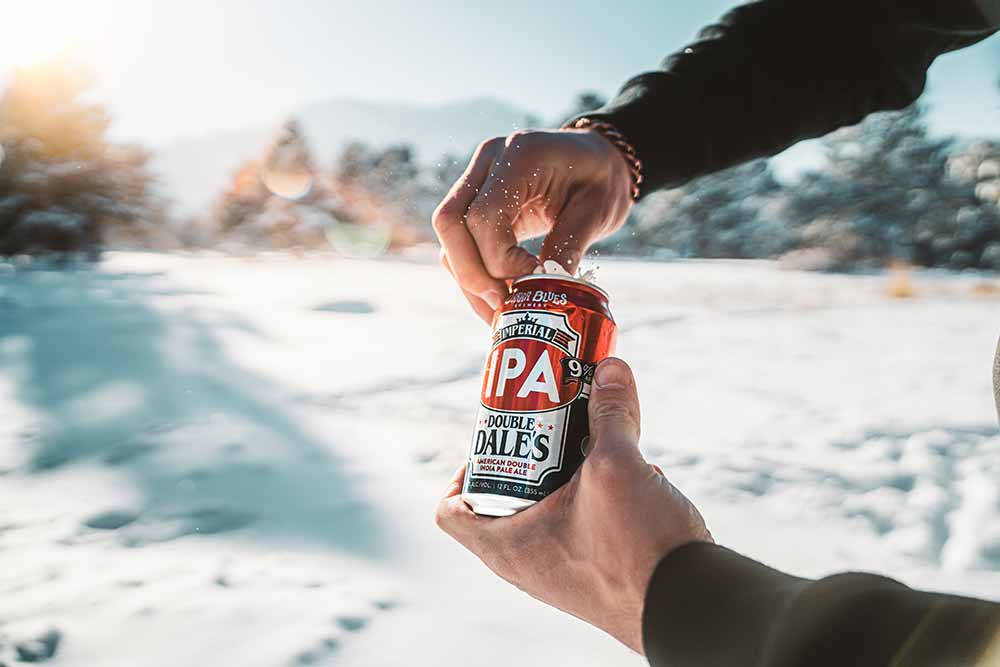
Photography courtesy of Oskar Blues Brewery
Intentionality in every step of the brewing process has been the key to Double Dale’s.
From the hops to the malts to even the water.
“This one has one of our more complicated water recipes,” says Laurienti. “A majority of our beers just have two to three different brewing salts going in the mash—this one has six.”
Drapeau explains that Colorado water is so clean that Oskar Blues often has to add things to it to give it the nutrients it needs to achieve a certain minerality.
Here, the brewing salts created a new mineral-forward house blend of H2O that provides a supporting backbone to the caramel-driven malt bill and distinctive piney, fruity hops.
It all comes together in the can or the glass to form one epic crusher.
Tasting Through Double Dale’s
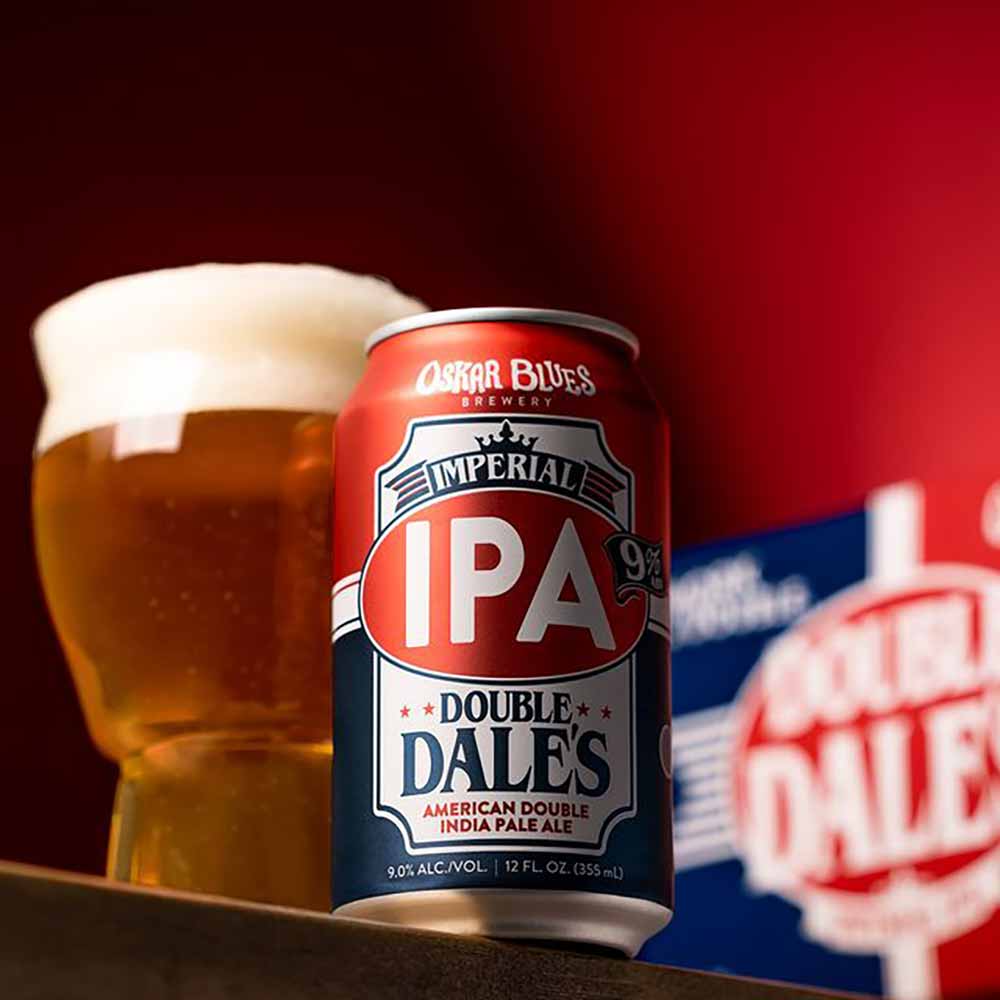
Photography courtesy of Oskar Blues Brewery
You can literally see the hard work that went into Double Dale’s as soon as it starts pouring into the glass. “For me, appearance is one of my favorite things with beer,” says Laurienti. “This beer has a very slight hop haze in it but more low luminescence as opposed to that thick, can’t-see-through-it haze.”
That beautiful orange, reddish hue from the specially selected malt bill immediately shines through.
On the nose, Double Dale’s has “aromas of lemon, grapefruit, and those citrus aspects as well as some tropical hop notes like mango, pineapple, papaya, also some peach and red apple,” says Drapeau.
Take a first sip of this beer and the true complexity starts to unfold like a blooming flower. “With a nice, strong supportive malt bill, you get biscuit, breakfast cereal, light bread notes, lemongrass, and geranium,” says Drapeau. It’s those latter floral notes that add a layer of complexity to this beer. And Drapeau attributes those to the unique dry hop combination in conjunction with the lighter crystal malts in the beer.
“For me personally, a lot of the other flavors are easier to detect, but for that floral aspect it’s hard to dig into those rose hip aromas,” says Drapeau. “That descriptor shows the diversity of this beer.”
Double Dale’s certainly takes your taste buds on a wild ride. And to be honest, that’s pretty much been true to form for this revolutionary twenty-five-year-old brewery. Each step of the way, Oskar Blues has left a footprint, stomping their way forward.
What Does Double Dale’s Mean to Oskar Blues?
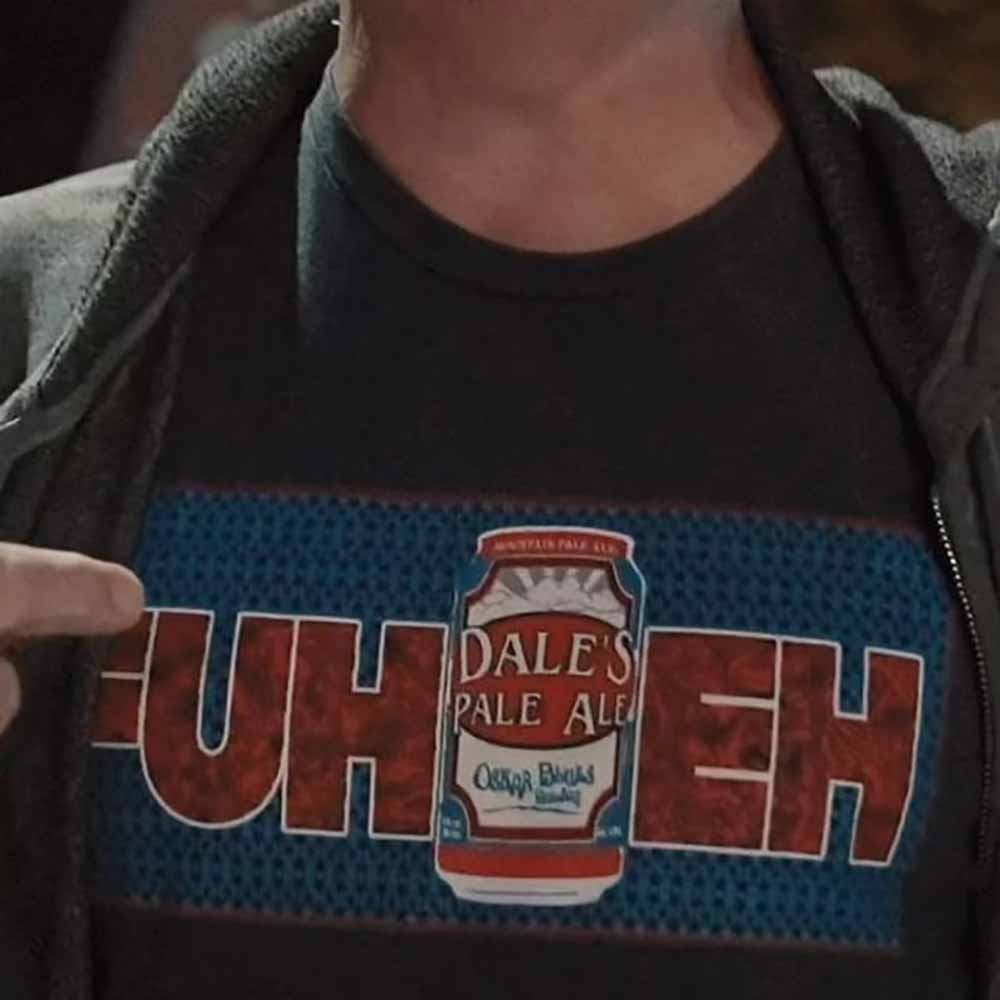
Photography courtesy of Oskar Blues Brewery
“To me, this is us still holding onto our roots and being true to who we are,” says Laurienti, noting that many of the folks who designed Double Dale’s have been with the brewery anywhere from eight to fifteen years.
A thirteen-year veteran himself, Drapeau says that, “We take pride in staying innovative and with the time, focusing on other beer styles that are trending, but also in brewing something very clean and very well done that taps into where the company came from—strong and hoppy.”
He recalls how Oskar Blues Brewery Founder Dale Katechis likes to ask: “How much alcohol can we put in a beer in a can to f*** with people?”
And that’s Double Dale’s to a T.
“There are middle fingers all over the place,” laughs Drapeau.
Where Can I Find Double Dale’s?
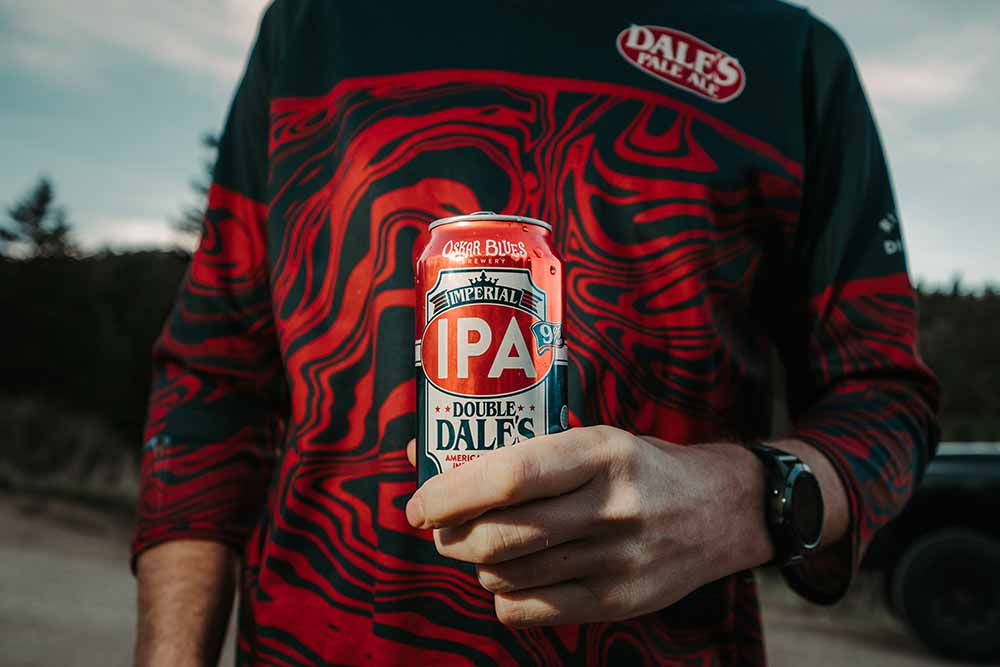
Photography courtesy of Oskar Blues Brewery
Double Dale’s Imperial IPA is available now nationwide in single-serve 19.2oz cans, in 6-packs of 12oz. cans, and on draft. Find Double Dale’s IPA near you via the Oskar Blues BeerFinder.

